MTH Electric Trains
7020 Columbia Gateway Drive
Columbia MD 21046
Price $999.95
Website: www.mthtrains.com
1:32 scale, gauge 1, plastic-and-metal A-A set of EMD F7 locomotives; ProtoSound3; smoke; analog DC, AC, DCC, and MTH DCS-compatible control
Pros: Accurate scale/gauge combination; well detailed with good fidelity to the prototype; multi-protocol operation; good quality sound; crisp paint; strong-pulling locomotive; smooth operation throughout speed range
Cons: Only one locomotive supplied with speaker; operation on analog PWM DC inconsistent (see text); no way to trigger bell or horn sounds under DC control; traction tires prone to come off if locomotive begins to slip
MTH released a model of an F3 a few years back (reviewed in Feb. 2007 GR). They’re calling this one an F7, and it’s worth noting that the prototypes for the specific models furnished for review (Norfolk Southern Nºs 4270/4271) are actually F9s. If this sounds like MTH is just playing fast and loose with the numbering, they’re not. There are few visible differences between the classes of F units so they all look similar; except for subtle variations in things like vents, they’re hard to tell apart without a close look.
One of the key distinguishing features between an F3 and F7/F9 is the grillwork along the side of the locomotive. Beginning with the F7, EMD used stainless-steel grills along the sides of the diesels, as opposed to the older-style wire mesh affectionately referred to as “chicken wire” by F-unit aficionados. The stainless-steel grillwork consisted of panels of horizontal or vertical louvers. MTH chose to model the horizontal louvers. The two prototype locomotives of our review sample had both varieties—one horizontal, one vertical. MTH reproduced this grillwork in stainless steel, true to the prototype. Other major details, like doors, vents, and fans, are likewise true to the prototype. Beyond that, there are too many railroad-specific variations between locomotives to render any further opinion to fidelity. You could go crazy super-detailing a dozen F-units and no two would be alike.
Cosmetically, the review-sample locomotives match the prototype quite well. At just over 19″ long, 3.5″ wide, and 5.5″ tall, the model matches the prototype measurements within a few inches in 1:32. Lettering and graphics on the model are sharp and true to photos of the prototype.
The locomotive pair comes with a pair of dummy couplers between the two units for prototypically close coupling. It also has a dummy coupler on the front of the lead unit for aesthetic purposes. The rear coupler is an automatic MTH knuckle coupler that can be operated from your controller. Note that while MTH says this pair will negotiate a 2′-radius (4′-diameter) curve, it will not do so with the dummy couplers in place. MTH supplies extra couplers and pilots when running these locomotives on 2′-radius curves.
Like the prototype, the differences between MTH’s F3 and F7 are more than just cosmetic. The primary differences lie inside. MTH revamped the control electronics in this locomotive with their new Protosound 3 decoder. This is their latest generation control system; their proprietary DCS command control system that is also DCC compatible. The locomotive will also run on traditional DC track power as well as AC, though AC power is a rarity for garden railroads.
It’s the DCC compatibility that is perhaps the biggest advance with respect to the electronics of this locomotive. Previous versions of MTH’s command-control system required you to use their controller to get the most out of the locomotive in terms of sound and functions. This is no longer the case. While you can still run this locomotive with MTH’s DCS control, you can also trigger all of the same functions using a conventional DCC control system. You can put this locomotive in a consist with other DCC-controlled locomotives and run them as one block of locomotives. The instruction book that comes with this locomotive lists all of the DCC controls and functions and how they’re programmed. If this locomotive is your first exposure to DCC, you may find the instructions a bit vague and confusing; however if you’ve had a modicum of experience, the instructions make sense.
It’s important to note that, while this set consists of two A-units, they’re designed to be run together as a pair. The second unit cannot run by itself. Despite this, MTH included an engineer in the cab of the second unit for good measure.
Using my MRC Prodigy Advance2 controller, I was able to easily control and configure the locomotive for best performance. The functions (a whole list of sounds, automatic couplers, turning the smoke on and off, and lights) worked without problem. For a few, I had to hit the function key twice to get them them to trigger but that may well have been an issue with my controller. The locomotive’s performance, compared to those equipped with other DCC decoders I’ve used, proved every bit as smooth and reliable. Sounds are realistic and the motors rev up and down with the speed of the locomotive, as expected. My only real complaint is that only the lead unit has a speaker. When you hear the pair of locomotives roll by, it’s noticeable that only one of them is making noise. There’s a multi-wire cable connecting the two locomotives; one would think it would have been easy to add two more wires and put a speaker in the second locomotive.
Because my MRC power unit is limited to 15V and 3 amps, I couldn’t really use it to test the motors on the engines as I would normally. For that, I switched to analog DC control. My controller for this—made by Aristo-Craft—outputs a pulse-width-modulation (PWM) signal to control the speed of the train, as opposed to a flat, linear, variable voltage. Many DCC decoders aren’t particularly fond of PWM signals, and this one is no exception. To my surprise, it actually did power up when I first applied the voltage to the rails but operation was inconsistent. One time everything would work fine but, when I stopped and started again, the motors would run but there wouldn’t be any sound, or there’d be sound and lights but the motors wouldn’t turn. I haven’t a clue why it switched between working functions as it did. The solution was to put a filter on the output of the controller to turn the PWM voltage to a flat, linear voltage. Once I did that, normal DC operation was smooth and reliable.
The drawback of running on analog DC is that there’s no way to trigger any of the functions. The directional lights are automatic but that’s all you get: no bells, no whistles. I would liked to have seen the availability of magnetic triggers as other sound-equipped locomotives have. You can control these if you run the train on AC, but few large scalers use AC.
Under DC control, the decoder needs around 7V to “wake up.” Once you have 7V, the locomotive powers up and begins to move. The voltage going to the motor, then, is whatever voltage is on the track minus 7V. So, if your power supply puts out a maximum of 20V, the highest voltage you’ll be able to feed to the motors themselves is 13V. However, the locomotive moves quite well at 13V so achieving prototypical mainline speeds shouldn’t be an issue. At full tilt, with lights and smoke, the pair of locomotives draws 3 amps running light.
Ordinarily, when I test a locomotive, I like to see how much current the locomotive will draw if the motor is stalled or when it’s slipping. Because this is two locomotives lashed together, there are a total of four power trucks, each with its own motor. Two of the wheels on each truck have traction tires for added traction, which made it pretty much impossible to run either of these two tests. I couldn’t physically stall all four trucks without risking extensive damage. The presence of the traction tires meant the locomotive wasn’t going to slip easily, either. When I tried, I ended up stretching two of the traction tires off the wheels! Suffice to say that, with four motors and eight traction tires, there’s a good chance that the pair will do just fine with whatever train you want to put behind it.
Whether running on DC or DCC,
I found the control to be smooth and quiet throughout the speed range. The directional lighting is neat to watch, and follows “Rule 17,” whereby the headlight dims when the locomotive is stopped. The cab light is on only when the locomotive is stopped. It turns off when the locomotive begins to move. When running on DC, there are controls for turning off the smoke units and adjusting the volume. This can be done remotely under DCC.
Overall, I’m impressed with this locomotive. The prototype is undoubtedly an attention-getter, and so is the model. I’m pleased to see MTH making their decoders DCC-compatible as well. This a bonus for those running DCC already but, with a wireless receiver such as one from Tam Valley Depot, it wouldn’t be much work to convert this locomotive to battery power as well and still have all the bells and whistles. For those wishing to customize this locomotive to match a specific prototype, it’s a good foundation from which to start.





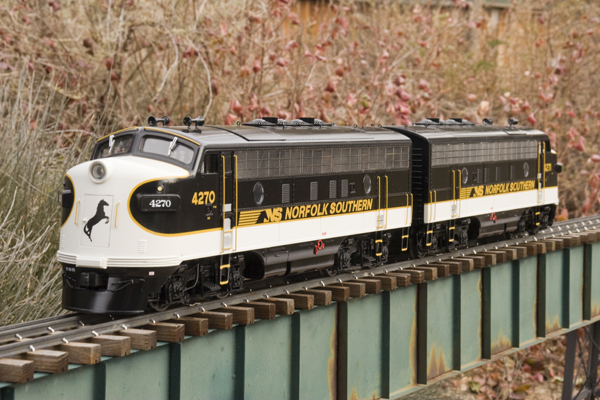
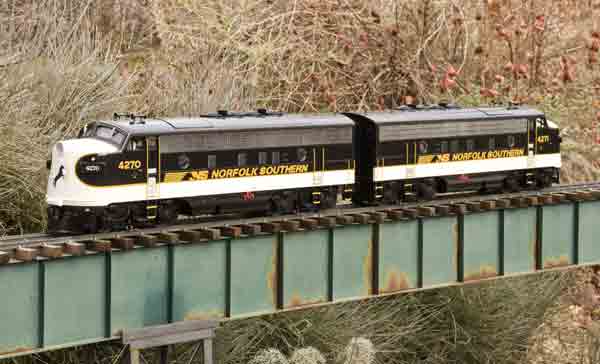
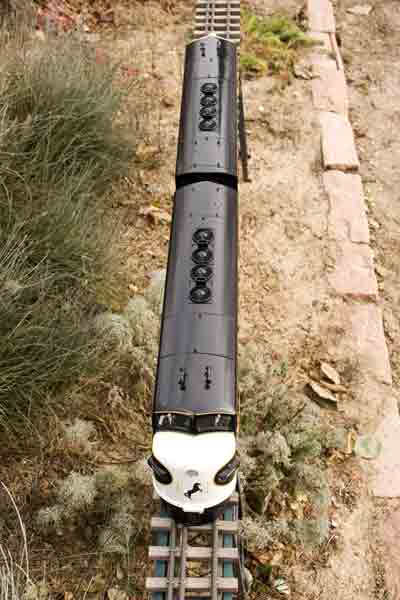
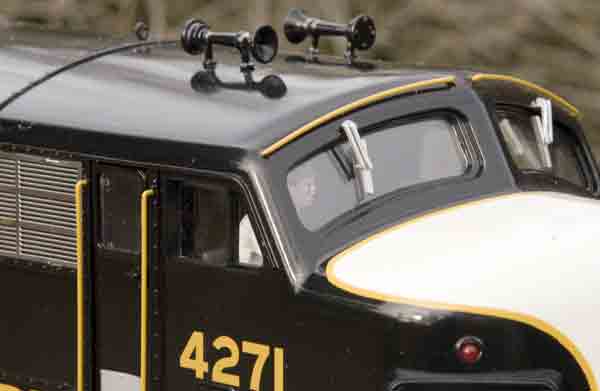
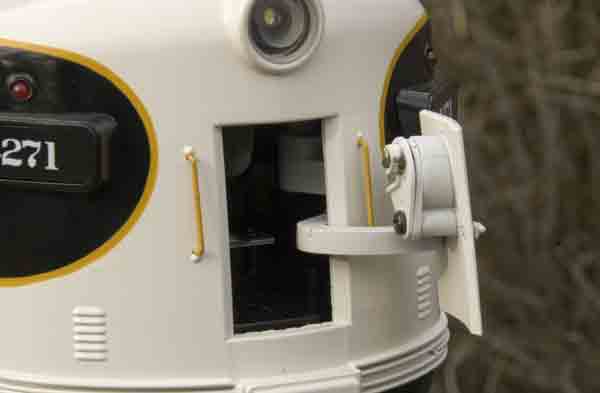
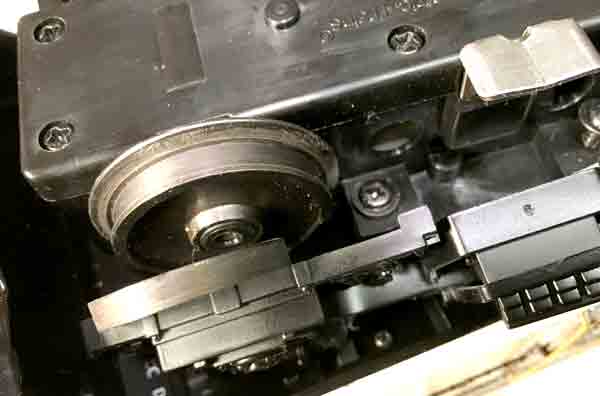


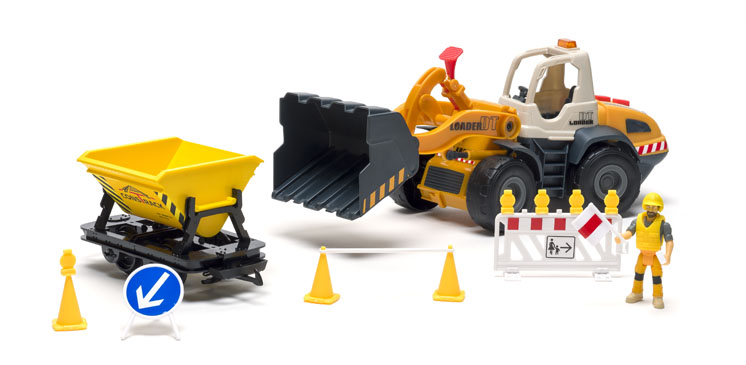
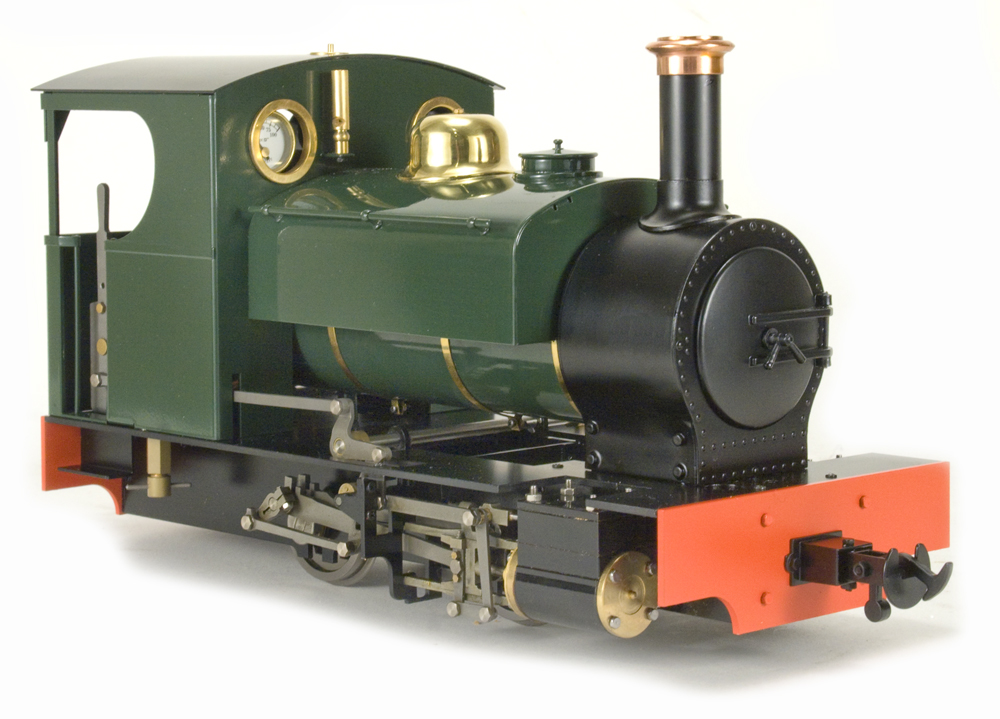





Traction tires on large scale locomotives? Gads, what a thought. Additional weight should elminate their use. Also, the price for the product is out of my budget. I’ll stick with Piko!